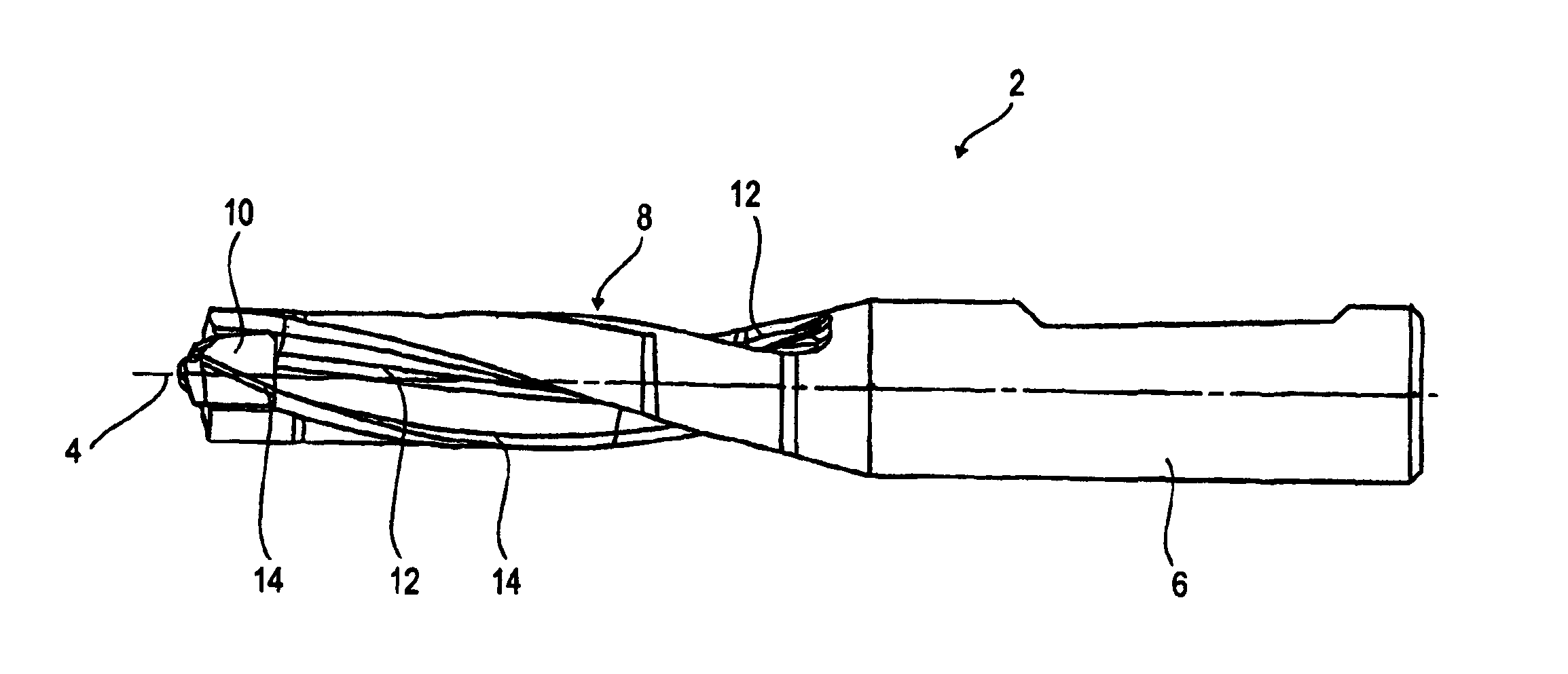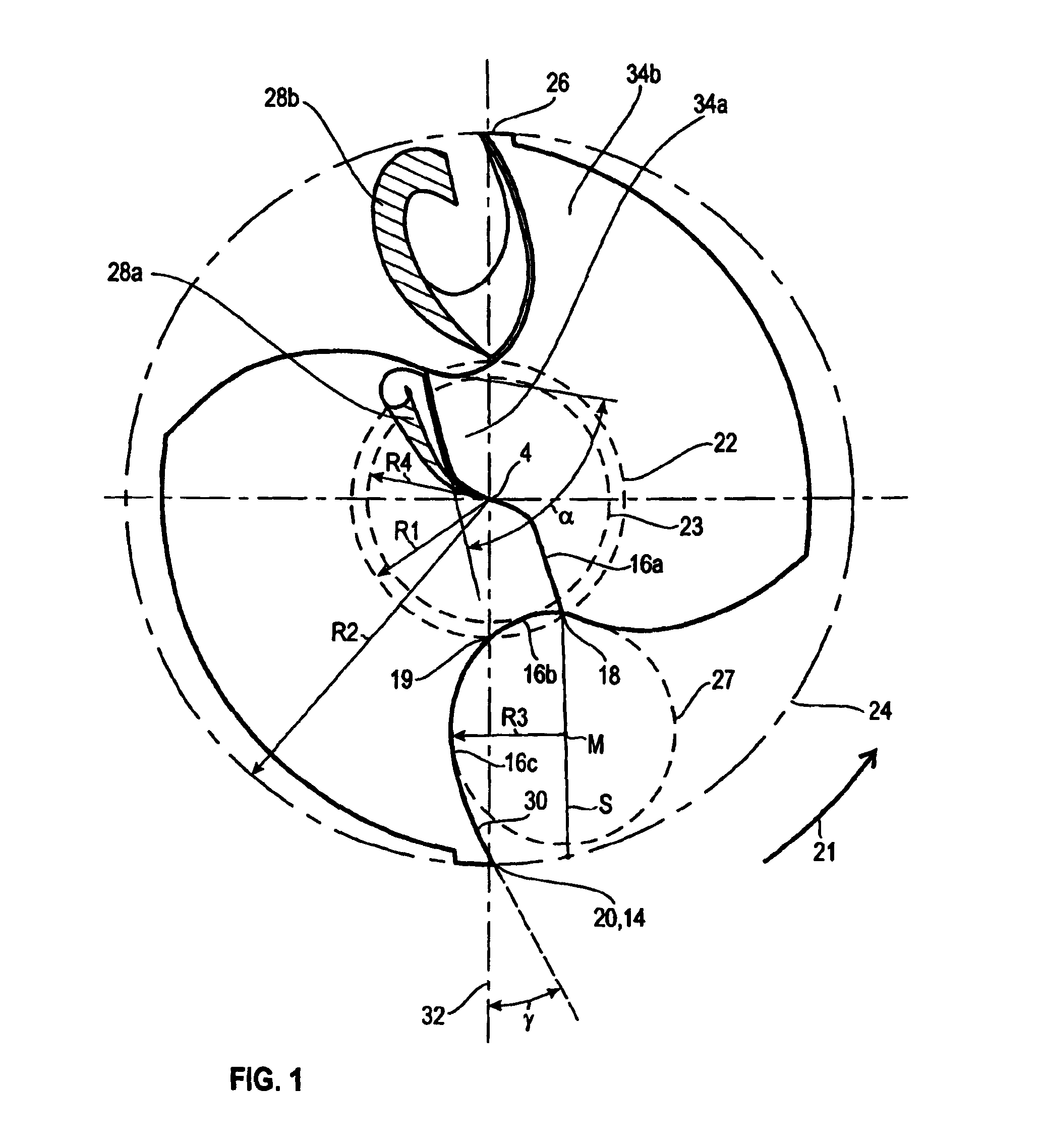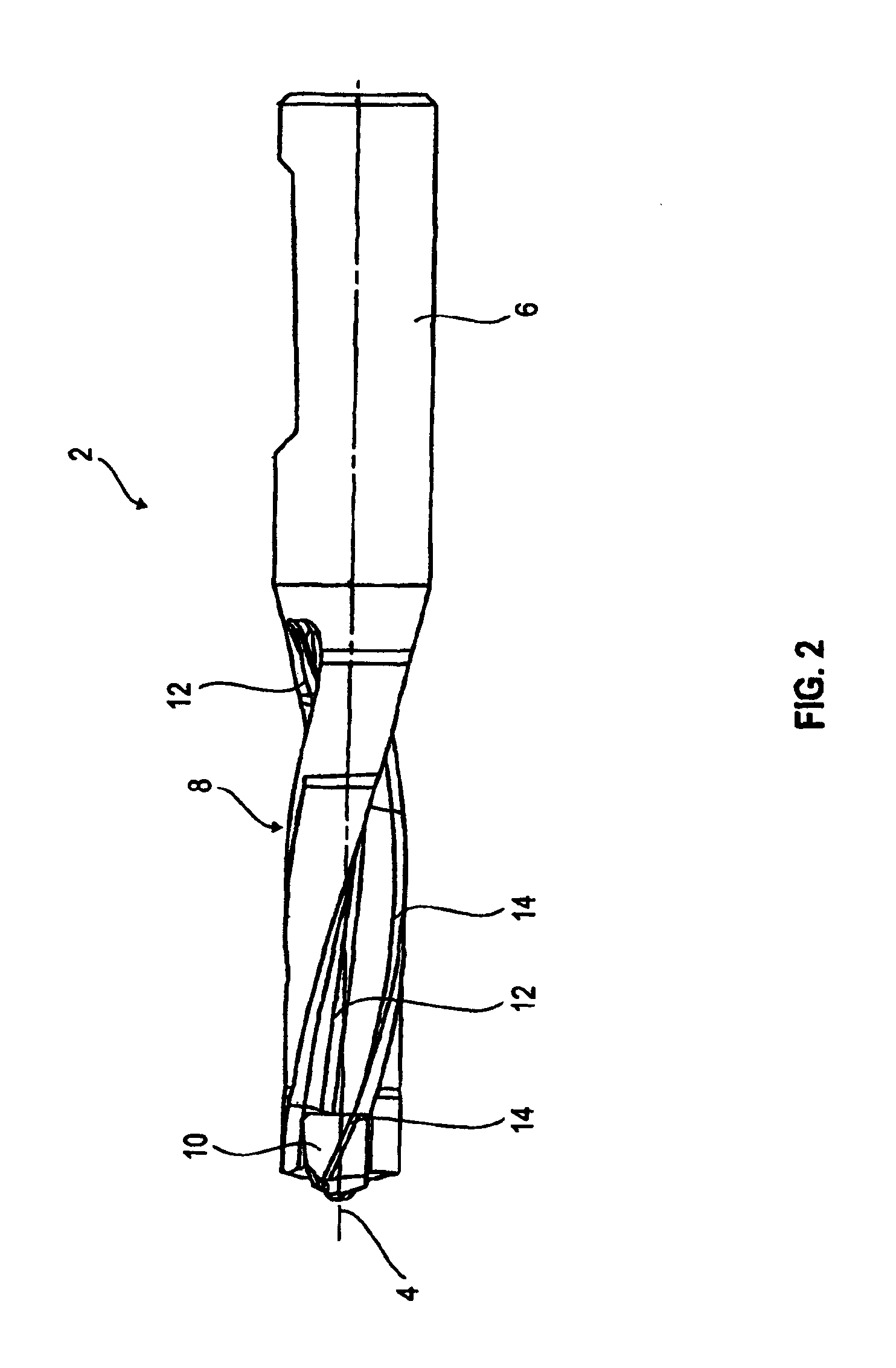Drill bit for drilling having at least two cutting edges, each with two cutting portions and a non-cutting portion between the two cutting portions
a drilling bit and cutting edge technology, applied in the direction of twisting drills, manufacturing tools, wood boring tools, etc., can solve the problems of increasing the free space of drill bits, affecting so as to ensure the accuracy of drilling holes, prevent, restrict, and/or minimize the effect of chips
- Summary
- Abstract
- Description
- Claims
- Application Information
AI Technical Summary
Benefits of technology
Problems solved by technology
Method used
Image
Examples
Embodiment Construction
[0047]In the figures, equivalent parts are provided with the same reference numerals.
[0048]As may be seen from FIG. 2, the twist drill 2 shown therein extends in the longitudinal direction along a drill center axis 4. It has at its trailing end a shank portion 6 with which it is clamped into a suitable machining device. The shank portion 6 is adjoined by a drill body 8 having at its front end a bit 10. The twist drill 2 shown comprises two helically running chip grooves 12 extending into the bit 10. Coolant holes, which issue at the front end or close to the tip of the bit 10, are conventionally passed through the entire twist drill 2. Along the chip groove 12 there runs in the drill longitudinal direction a respective secondary cutting edge 14 which is therefore also embodied so as to run helically.
[0049]In one possible embodiment, the bit 10 is embodied as an exchangeable, separate part which is fastened in the drill body 8 in a clamping manner. The twist drill 2 shown in FIG. 2 i...
PUM
| Property | Measurement | Unit |
|---|---|---|
| cutting angle | aaaaa | aaaaa |
| chip angle | aaaaa | aaaaa |
| angle | aaaaa | aaaaa |
Abstract
Description
Claims
Application Information
 Login to View More
Login to View More - R&D
- Intellectual Property
- Life Sciences
- Materials
- Tech Scout
- Unparalleled Data Quality
- Higher Quality Content
- 60% Fewer Hallucinations
Browse by: Latest US Patents, China's latest patents, Technical Efficacy Thesaurus, Application Domain, Technology Topic, Popular Technical Reports.
© 2025 PatSnap. All rights reserved.Legal|Privacy policy|Modern Slavery Act Transparency Statement|Sitemap|About US| Contact US: help@patsnap.com



